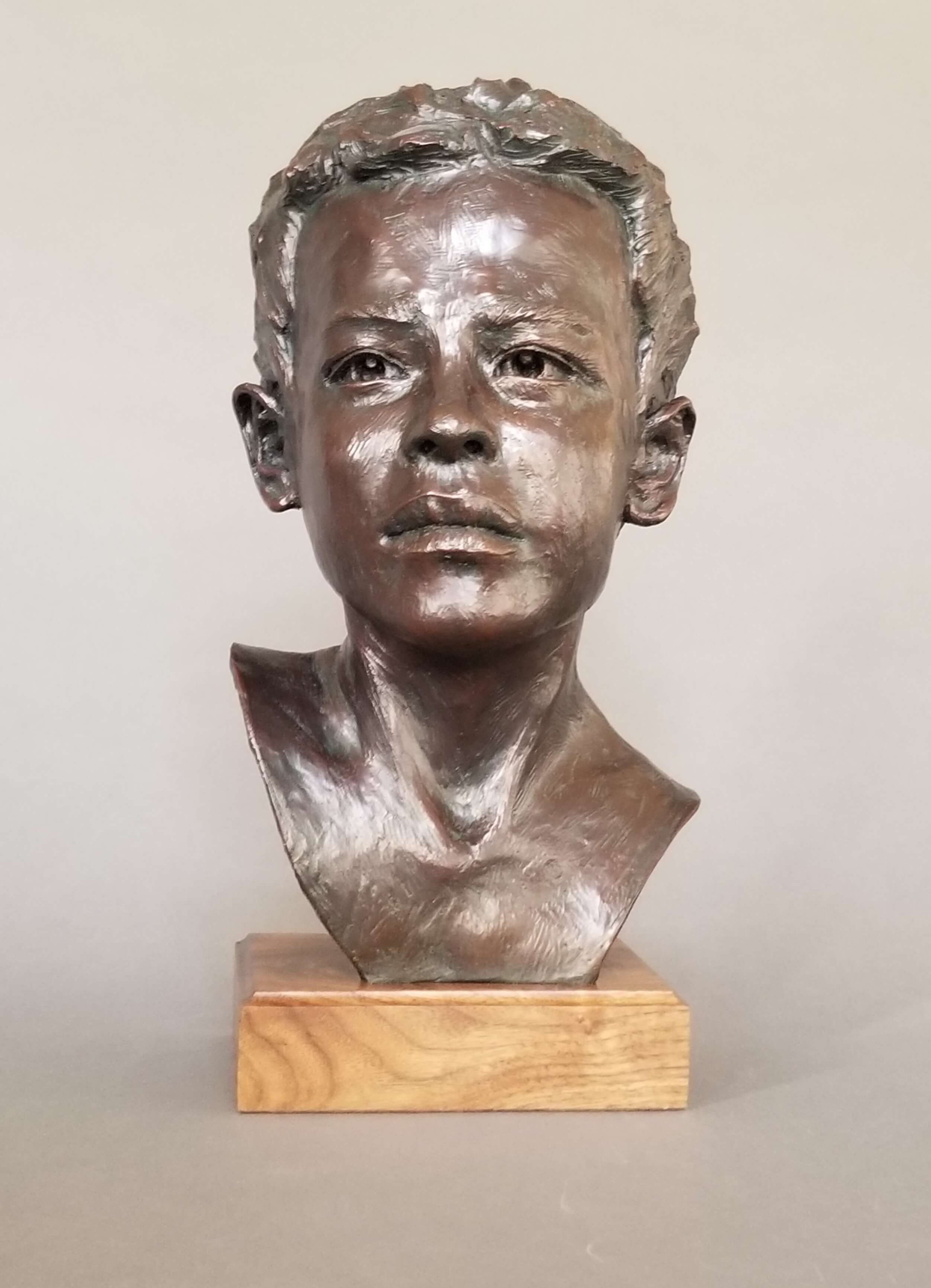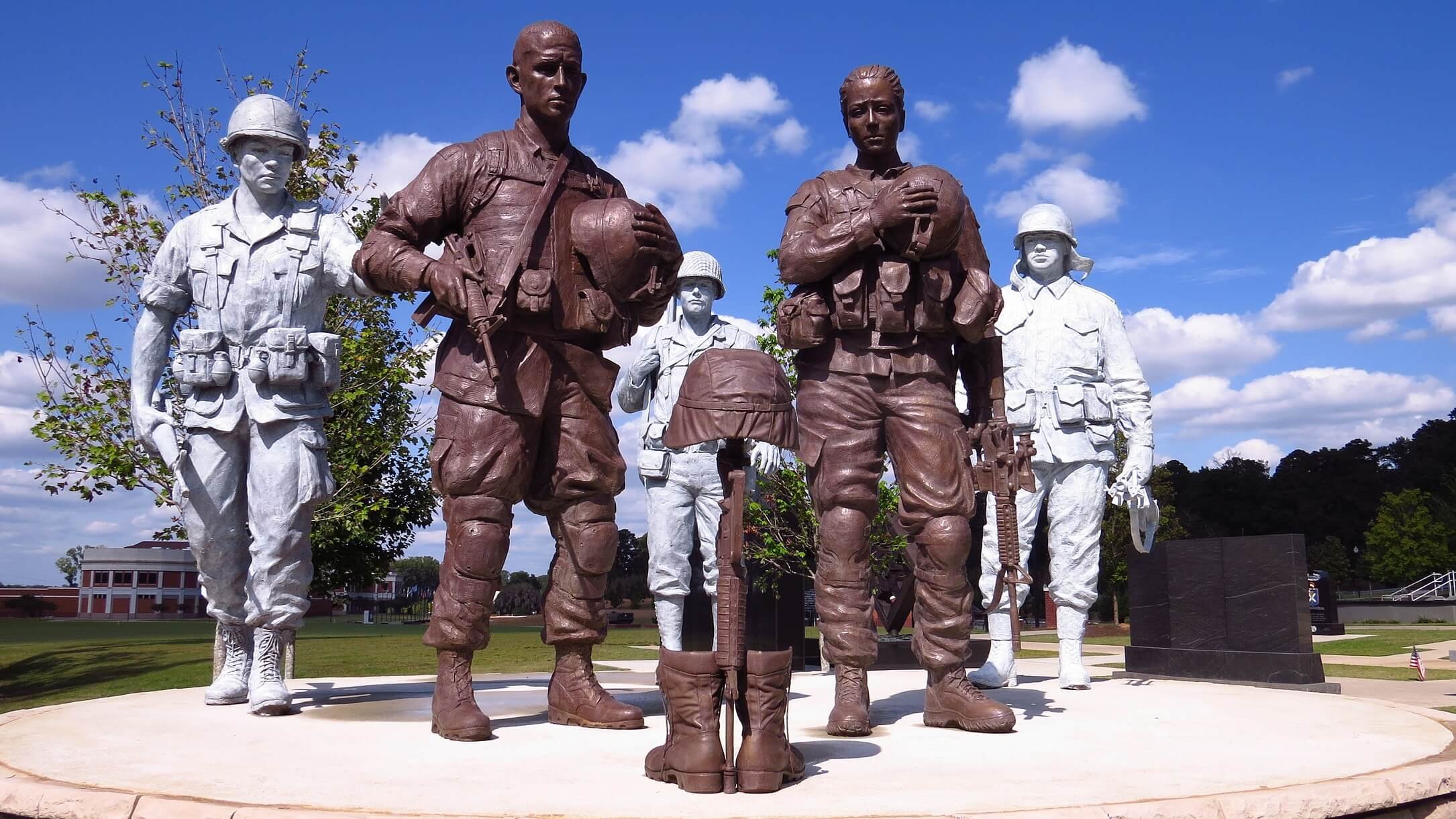Lynn Weiler Liverton
After earning her Bachelor of Architecture and practicing with firms in Boston and Honolulu, Lynn Weiler Liverton returned to school and, in 1996, earned her MFA from the University of Hawaii. For over twenty-five years, she has exhibited across Hawaii and the mainland U.S.
Liverton’s art practice is split between portrait commissions in bronze and contemporary figurative sculpture. One of her most ambitious projects to date is United by Sacrifice, a multi-figure memorial to the Armed Services, with editions installed in Oahu, HI; Columbus, GA; and Coleman, MI. Some of her commissions include the Thurgood Marshall Memorial (New City, NY), Theodore Roosevelt Memorial Bust (Honolulu, HI), and the Rockland County Iraq and Afghanistan Memorial and Monument, featuring Cpl. Megan Leavy and MWD Rex in Haverstraw, NY.
Liverton was recently awarded the Carey Boon Nelson Award for Traditional Sculpture at the 126th Annual Catharine Lorillard Wolfe Art Club Annual Awards Exhibition.
Her bronze piece Imiloa was recently exhibited at the National Sculpture Society’s 90th Annual Awards exhibition, held at Brookgreen Gardens, SC. Liverton was also featured on the cover of Fine Art Connoisseur Magazine.
Artist Statement
Lately, I have been wondering how I can tune out... but tune in. I want to un-hear some of the things out there in the world that distract me from figuring out the baseline—the internal dialogue. I use the figure to express what wants to be heard, or perhaps what needs to be tuned out. I am fascinated by these personalities that are born in the studio. I don’t really know what these figures will look like in the end, or what they will say. My art practice has always been about discovery through the figure. My contemporary works seek the connections between individuals, as well as the internal connection of the self.
I also work in large-scale figurative bronze, memorializing people or events. In these commissioned pieces, the figures are not imagined by me, but I get to know the subject through sculpting them. With these figures and portraits, I am looking for (and finding) that connection.
https://www.lynnliverton.com/
What initially drew you to art?
I was an architect living in Boston when one of my friends dragged me to see the French movie Camille Claudel. Something clicked, and I thought, "I need to do that!" So, I bought a bag of clay and began sculpting. I had no idea what I was doing. I lost hours and hours of time; I realized that all I thought about was that bag of clay! Although I still enjoyed working as an architect, I decided I should go to art school, as I had no training or even knew what the possibilities of different mediums could hold. So, at age 26, I had a quarter-life crisis, dumped Architecture, earned an MFA a few years later, and never looked back.
What elements of your life have ended up becoming a part of your art?
I am not sure what HASN’T influenced my practice. Current events, dreams, nightmares, and symbols of memories are all entwined in my work. Found objects were used heavily as part of my early work, using the history of the object to strengthen the narrative. Many of the objects were from the age of my childhood. The figure has been the anchor of all my work and continues to be. I think the figure symbolizes the inner workings of my emotional life—making sense of the human experience. Through the commemorative bronze work, I love the research required to accurately depict a person or event. With these portraits and installations, I want to give people a place to reflect on their own experiences or to connect with an honored individual.
What about your practice do you find the most fulfilling and/or energizing?
The problem-solving aspect of my practice gives me the most satisfaction. This is also the most frustrating at times, as well! When I look for ways to strengthen the narrative of the piece, I am continually adjusting the features of my figurative work or finding the right object to incorporate. If I am working on a commission, the challenge is to find accuracy. The research required to understand the life of the person being depicted is also a lot of fun. If the person has passed, I get to know their loved ones and hear stories of their shared pasts. I feel triumphant when I can find the right button for a uniform or when I can feel the fabric of the dress they once wore.
Tell us about your experience getting to where you are now. What has been the most important thing you’ve learned?
I still can’t believe that I abruptly changed the course of my life, knowing nothing, really, about art. The thing I learned is that you should listen to your gut and do the thing that makes you lose track of time. The more you can be in the zone, the happier you will be; for me, that is sculpting.
How has ‘community’ impacted your artistic practice?
I live in Hawaii and work with native Hawaiian children. Family values are very strong, and the life of "aloha" is easy to live. By helping my students find their voice through the visual arts, I find my work is strengthened. The cultural diversity of my island home feeds my work. I have figured out that I prefer to work in spaces with other people, engaged in parallel play, as it were. I am an extrovert, and all the interactions with the island community and the art community are necessary to me. The community of artists on Instagram has also been terrific. I follow many artists of all mediums and am thrilled to see their work evolve! Though I don’t have a large following myself, I am very appreciative of the encouragement and inspiration I get from my Insta-pals.







